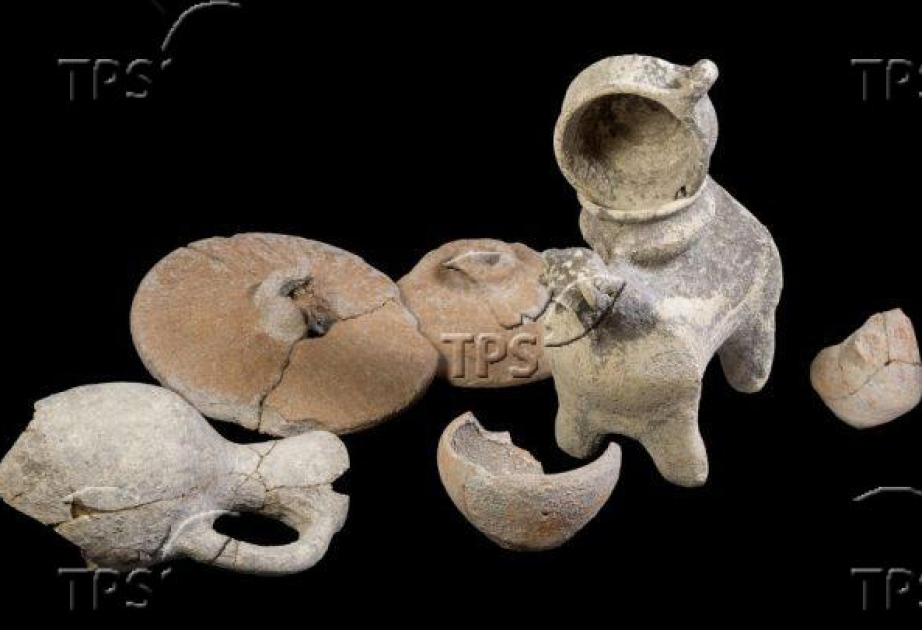Archaeologists in northern Israel have uncovered extraordinary evidence of ancient wine production and Canaanite folk worship near Tel Megiddo, TPS-IL reported citing the Israel Antiquities Authority.
Excavations conducted ahead of road construction along a highway revealed a winepress estimated to be 5,000 years old—one of the oldest ever found in Israel—alongside ritual artifacts from around 3,300 years ago that shed light on domestic religious practices in the region long before the arrival of the Israelites.
“This winepress is unique, one of very few known from such an ancient period when urbanization first took place in our region,” said Dr. Amir Golani, one of the excavation directors. “Until now, indirect evidence indicated that wine could have been produced 5,000 years ago, but we did not have conclusive proof of this — a ‘smoking gun’ that would clearly show when this happened in our area. This winepress finally provides new and clear evidence that early wine production actually took place here.”
The Early Bronze Age winepress was carved directly into the rock, featuring a sloping treading surface and a collection vat. Archaeologists also discovered the remains of nearby residential buildings, highlighting the importance of wine production in the local community and the extension of Megiddo’s settlement far beyond the city’s ancient tell.
Later finds from the Late Bronze Age II include a carefully buried set of ritual vessels, a miniature ceramic shrine, and imported jugs from Cyprus. Of particular note is a complete ceremonial utensil set, including a zoomorphic vessel shaped like a ram, which appears to have been used for libations. Researchers explained: “A small bowl, which was attached to the ram’s body, was designed to function as a funnel, and a similar bowl — with a handle—was probably held to pour the liquid into the funnel during a ceremony. The ram’s head was shaped like a spout. Once the vessel was filled, tilting the ram forward spilled the liquid out from its mouth into a small bowl placed before it. The vessel seems intended for pouring a valuable liquid such as milk, oil, wine, or another beverage, which could either be drunk directly from the spout, poured into a smaller vessel for consumption, or offered as a votive gift.”
The placement of these ritual vessels near a large rock outcrop outside the main city gate suggests that local farmers may have conducted ceremonies beyond the confines of the city, offering liquids or agricultural produce to express devotion. “Megiddo has been excavated for over a century,” the researchers noted. “While it is long recognized as a key site in the study of ancient urbanism and Canaanite worship, the excavations we conducted east of the tel have revealed a new part of the matrix between the known settlement in the city and the activities taking place in the surrounding area.”
The excavation forms part of a major infrastructure project along Highway 66, a critical artery connecting the Jezreel Valley, Yokneam, and the Gilboa region. The 1.2-kilometer excavation unearthed a range of artifacts spanning multiple periods, from the Early Bronze Age IB to the Late Bronze Age II, revealing both the region’s settlement expansion and religious practices. Many of the items will be displayed in Jerusalem.
The Highway 66 project is being carried out “with a deep commitment to preserving our nature, history, and heritage values,” said Nissim Peretz, CEO of Netivei Israel, the government-owned company responsible for planning, building, and maintaining the country’s road and railway infrastructure. “These remarkable discoveries are a national asset and proof that advancing national infrastructure can proceed with full responsibility towards the past.”
Tel Megiddo is one of the most significant archaeological sites in the Middle East, with a history stretching back over 5,000 years. Inhabited continuously for over 5,000 years, it is mentioned several times in the Bible. Christian texts often refer to the site as “Armageddon.” Today it is designated by the United Nations Educational, Scientific and Cultural Organization (UNESCO) as a World Heritage Site.







.png)









